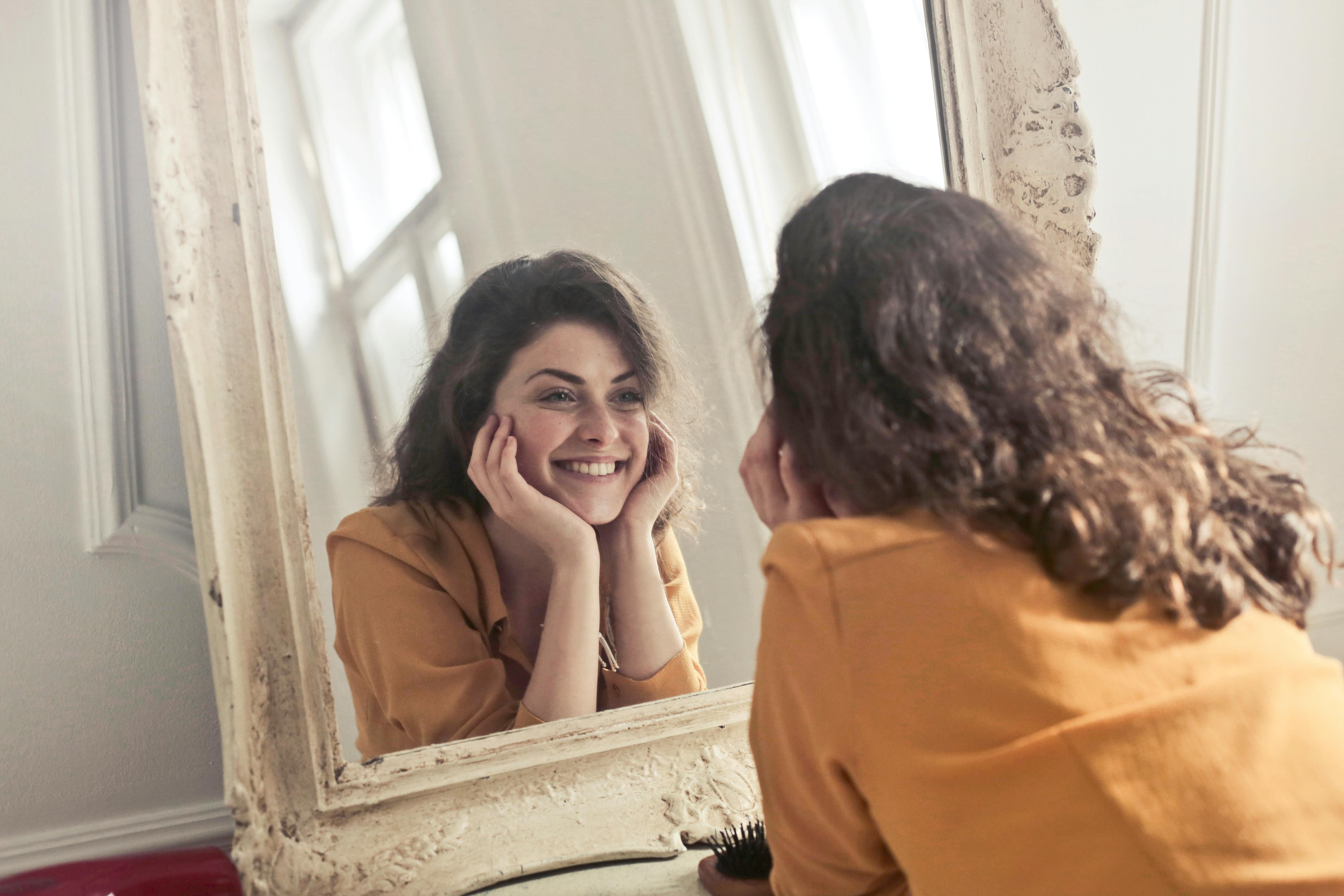Does Botox Make You Look Older After It Wears Off

Botox is a popular cosmetic procedure used to reduce the appearance of wrinkles and to give a more youthful look. However, many people wonder if Botox can make you look older after it wears off. This article will explore the effects of Botox on the skin and whether or not it can cause premature aging. We’ll also discuss some tips for minimizing the risk of potential side effects from Botox treatments.No, Botox does not make you look older after it wears off. Botox works by temporarily paralyzing the muscles it is injected into, which helps to reduce facial wrinkles and lines. When the effects of Botox wear off, the muscles return to their normal state and facial wrinkles and lines may appear as they did before treatment.
Understanding How Botox Works
Botox is a popular cosmetic treatment that has been around for over two decades. It is used to reduce the appearance of wrinkles, fine lines, and other signs of aging. Botox works by temporarily paralyzing the muscles in the face, which helps reduce the appearance of wrinkles. The injections are made up of a protein called botulinum toxin, which blocks nerve impulses from reaching muscles, resulting in paralysis. This paralysis is only temporary and will usually last for several months.
The effects of Botox can vary depending on the person receiving it and where it is being injected. Generally, people see results within two or three days after treatment and they can last anywhere from three to six months. However, some people may need to have multiple treatments before they begin to see any noticeable results.
Botox is relatively safe when administered by a qualified medical professional, although there can be some side effects such as redness or swelling at the injection site or nausea and headaches. It is important that you speak with your doctor prior to receiving Botox injections to ensure that it is right for you and to discuss any potential risks associated with the procedure.
Overall, Botox is a safe and effective way to reduce the appearance of wrinkles and other signs of aging without having to resort to surgery or other more invasive treatments. It can be done quickly in a doctor’s office with minimal downtime and long lasting results that can help you look younger and more refreshed for many months after treatment.
Botox and the Aging Process
Botox is a popular cosmetic treatment used to reduce wrinkles and signs of aging. It can be used to treat a variety of concerns, including fine lines, wrinkles, crow’s feet, and forehead furrows. Botox works by temporarily paralyzing the muscles that cause wrinkles and other signs of aging. The effects of Botox can last up to four months with regular treatments.
Botox is a non-surgical procedure that has become increasingly popular in recent years due to its effectiveness in fighting the signs of aging. It works by injecting small amounts of botulinum toxin into specific facial muscles to relax them. This reduces the appearance of wrinkles and gives the face a more youthful appearance. The effects are temporary but can last up to four months with regular treatments.
Botox is an effective tool for combating the signs of aging, but it is important to understand that it cannot reverse the process or stop it altogether. While Botox can help reduce the appearance of wrinkles, it won’t prevent new ones from forming as you get older. In order to maintain results over time, regular treatments are necessary.
It is also important to note that Botox isn’t suitable for everyone. As with any medical procedure, there are risks involved and it’s important to talk to your doctor before having Botox injections so they can assess your suitability for treatment and explain any potential risks or side effects you may experience during or after treatment.
Overall, Botox can be an effective tool for reducing the appearance of wrinkles and other signs of aging, but it does not replace proper skin care regimen such as sunscreen use, moisturizing regularly, and avoiding excessive sun exposure. With careful consideration and professional advice from your doctor, you can use Botox safely and effectively as part of an anti-aging plan that works best for you.
Benefits of Botox
Botox is most commonly known for its aesthetic uses, but there are many other benefits of this treatment. Botox is a form of botulinum toxin, which is a neuromodulator, meaning that it relaxes the muscles in the area where it is injected. This can provide relief for those suffering from chronic pain or headaches due to tension in the muscles. Botox is also used to treat blepharospasm, which is an involuntary contraction of the eyelids, as well as hyperhidrosis, or excessive sweating.
In addition to medical uses, many people use Botox for cosmetic purposes. The most common areas for treatment are the forehead and around the eyes, as Botox can help reduce wrinkles and fine lines caused by aging or sun damage. It can also be used to prevent wrinkles from forming in younger patients by relaxing facial muscles that cause creases in the skin when we make certain expressions like frowning or smiling.
Botox can also be used to treat dental problems such as teeth grinding or TMJ (temporomandibular joint) disorder. By relaxing the jaw muscles and reducing tension in the area, Botox can help relieve pain and improve jaw function. Other aesthetic benefits include lifting of eyebrows and corners of mouth, as well as reducing lines around lips and chin.
Overall, there are many benefits to using Botox as a treatment option for various medical and cosmetic concerns. It is important to consult with a healthcare professional before beginning any type of treatment plan with Botox so that you can determine if it is right for you.
Side Effects of Botox
Botox is used to reduce wrinkles and fine lines by temporarily paralyzing the muscles. It has been approved by the FDA for cosmetic purposes, but it is important to note that there may be some side effects from using Botox. The most common side effects include pain, redness, swelling, bruising at the injection site, headache, and flu-like symptoms. Other side effects may include drooping eyelids or eyebrows and difficulty swallowing. In rare cases, there may be an allergic reaction that can result in facial paralysis or difficulty breathing. It is important to consult with a doctor before getting Botox injections to discuss any potential risks or side effects.
It is also important to note that while Botox does have some potential risks and side effects, it is generally considered safe when administered by an experienced physician. The most common side effect of Botox is temporary paralysis of the injected area, which typically lasts three to four months before wearing off. In rare cases, however, this paralysis can last longer than expected or become permanent if too much Botox is used in one area. Therefore, it is important to follow the dosage instructions provided by your doctor carefully when receiving Botox treatments.
In addition to these potential risks and side effects of Botox injections, there are other safety concerns that should be taken into consideration before getting treatment. For example, patients who have had previous facial surgery or nerve damage should avoid getting Botox injections as they may be more at risk for complications such as facial asymmetry or weakness in the affected area. It is also recommended that pregnant women avoid getting treatment with Botox as it can cause contractions in the uterus. Finally, people who are taking certain medications such as blood thinners should talk to their doctor before getting a Botox injection as these medications can increase the risk of bleeding at the injection site.

Possible Long-Term Effects of Botox
Botox is a popular cosmetic procedure that has been used for decades to reduce wrinkles and fine lines on the face. While the short-term effects of Botox are well known, there have been some reports of long-term effects that may be associated with the use of Botox. These include changes in facial expression, difficulty in breathing, and even an increased risk of certain types of cancer.
Facial expressions may be altered due to the temporary paralysis caused by Botox injections. If the injections are received too often or if too much Botox is used, it can cause facial muscles to become weakened or even paralyzed over time. This can lead to changes in your facial expressions such as a sagging appearance or an inability to make certain facial expressions.
Botox injections can also cause difficulty in breathing due to the weakening or paralysis of throat muscles as well as those around the nose and mouth. This can lead to difficulty swallowing and speaking, as well as shortness of breath.
Finally, there is some evidence that regular use of Botox may increase the risk for certain types of cancer such as breast cancer and lymphoma. While more research needs to be done on this topic, it is important for people considering Botox treatments to speak with their doctor about any potential risks associated with regular use.
In conclusion, while Botox has many short-term benefits for people looking to reduce wrinkles and fine lines, there are potential long-term effects that should be taken into consideration before deciding on a course of treatment. It is important to speak with your doctor about any potential risks before getting a Botox injection in order to ensure your safety and health.
Cost Considerations for Botox Treatments
The cost of Botox treatments vary depending on the area that is being treated and the number of units used. Generally, Botox treatments range from $200 to $500 per area. Additional areas may require additional units, which increases the cost of the procedure. The number of units used for a particular area is determined by a qualified healthcare professional and can be discussed before treatment begins. Additionally, some insurance companies may cover part or all of the cost of Botox treatments depending on the medical necessity.
In addition to the cost of treatment, there are other factors that should be taken into consideration when deciding whether or not to undergo a Botox treatment. For example, there are certain risks associated with using Botox such as bruising, swelling, infection and nerve damage. It is important to discuss these risks with a qualified healthcare professional before undergoing any procedure. Additionally, it is important to understand that results may vary and that multiple treatments may be necessary in order to achieve desired results.
Overall, it is important to take all factors into consideration when considering undergoing a Botox treatment. It is important to discuss all aspects of treatment with a qualified healthcare professional in order to ensure safety and achieve desired results. Additionally, it is important to understand that cost can vary depending on the area being treated and number of units used in order to properly budget for the procedure.
Alternatives to Botox for Anti-Aging
There are many alternatives to Botox that can be used for anti-aging purposes. These include chemical peels, dermal fillers, laser skin resurfacing, and microneedling. Chemical peels are a great way to reduce wrinkles and fine lines while also promoting collagen production. Dermal fillers can help restore volume and fullness in the face for a more youthful look. Laser skin resurfacing is an effective way to improve the texture of the skin by removing dead skin cells and stimulating collagen growth. Lastly, microneedling is a procedure that helps reduce wrinkles and age spots by creating tiny punctures in the skin that stimulate healing and collagen production.
In addition to these treatments, there are other alternatives such as radiofrequency treatments, topical creams or serums, light therapy, and cryotherapy. Radiofrequency treatments use heat energy to stimulate collagen production which can reduce wrinkles and improve skin texture. Topical creams or serums can help reduce wrinkles by hydrating the skin while light therapy can help even out skin tone and diminish fine lines. Lastly, cryotherapy involves freezing fat cells in order to reduce wrinkles or age spots on the face or body.
Overall, there are many alternatives to Botox that can be used for anti-aging purposes depending on your individual needs and preferences. It is important to speak with your healthcare provider before deciding on a particular treatment so you can make sure it is safe and effective for you.

Conclusion
Botox can be an effective treatment for reducing wrinkles and giving a more youthful appearance. The effects of Botox usually last between 3-6 months, but may last longer depending on the individual and the type of product used. However, once the Botox wears off, it does not make you look older than before. Instead, you simply revert back to your original appearance prior to the treatment. In most cases, lines and wrinkles will reappear over time but this can be prevented with regular maintenance treatments.
Overall, Botox is a safe and effective way to reduce wrinkles and improve your facial features without making you look older in the long run. With proper maintenance and care, you can enjoy long-lasting results that can help you feel more confident in your own skin.
